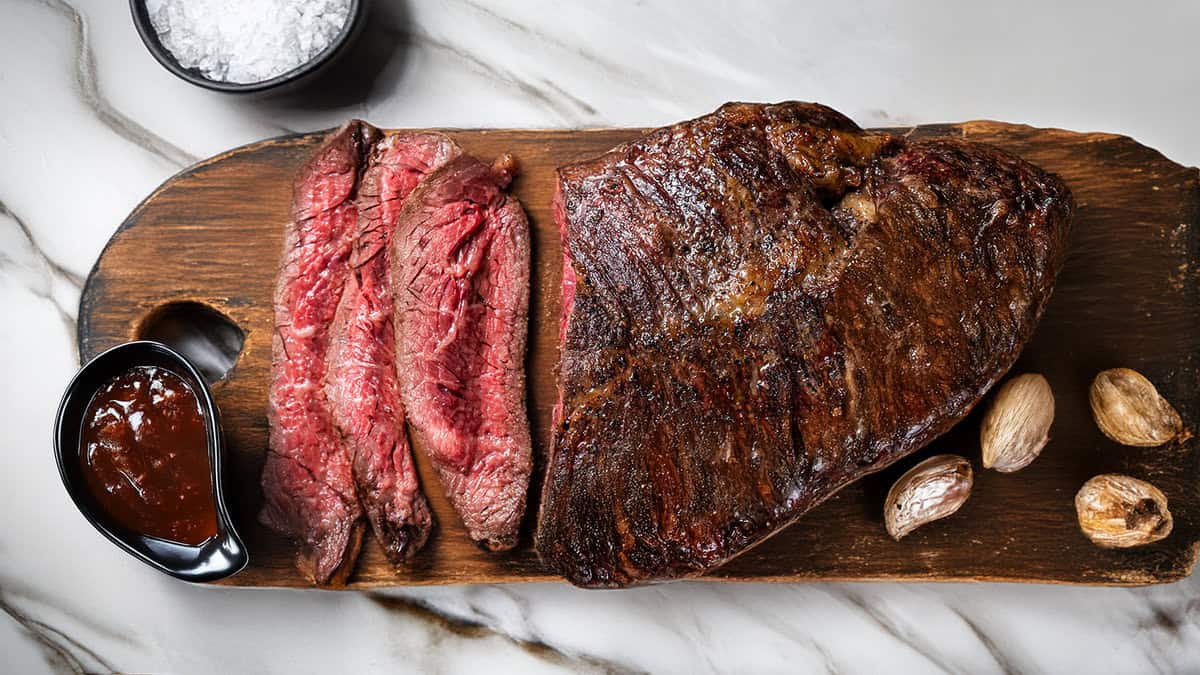
This site runs ads and generates income from affiliate links. Read my disclosure policy.
Learn how to make the perfect pan fried steak with this simple guide. You only need a few ingredients to make your ideal steak.
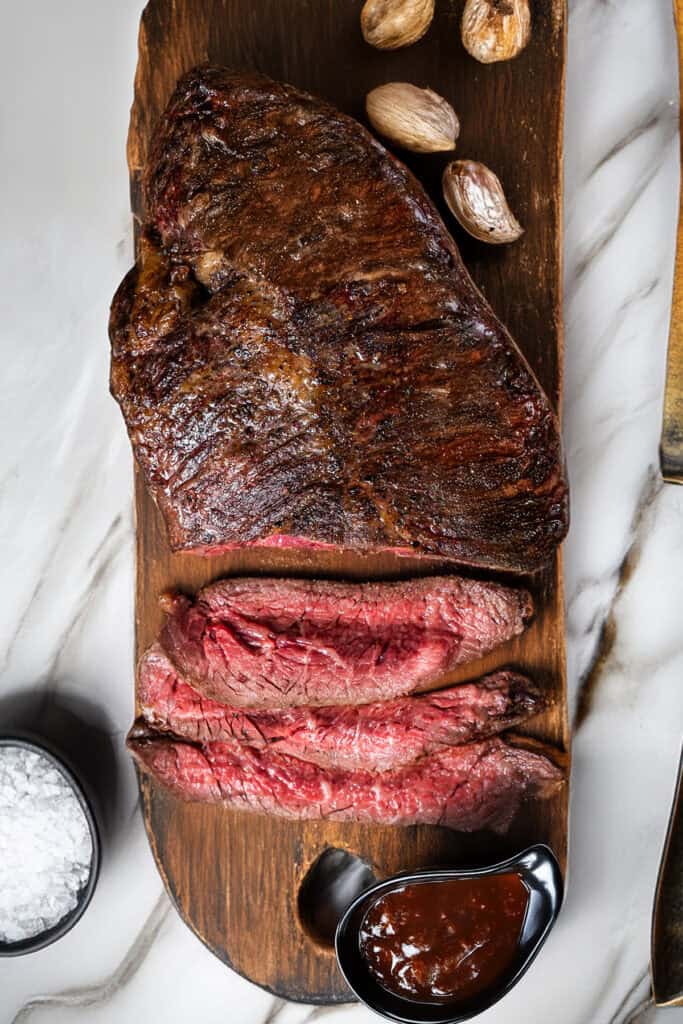
Nothing beats the taste of a perfectly cooked steak. Whether you’re serving it up for a special occasion or want to enjoy an amazing meal, a good seared steak is sure to satisfy.
This simple guide teaches you how to make a perfectly cooked steak that takes just minutes to prepare. Not only that, but you also don’t need fancy equipment or ingredients. All you need are a few basic items from your kitchen! So if you’re looking for an easy way to impress your guests, look no further than this guide on making the perfect pan fried steak!
Why This Recipe Works
- Searing the steak helps to create a flavorful, caramelized crust that seals in all of its delicious juices.
- Butter basting adds an extra layer of flavor and helps to keep it nice and moist.
- Garlic and herbs provide an aromatic flavor to the steak.
Pan Recommendations
When pan frying steak, choosing the right type of pan is important. Non-stick pans are often the go-to choice for quick and easy cooking, but they don’t always provide the best results when it comes to searing steaks.
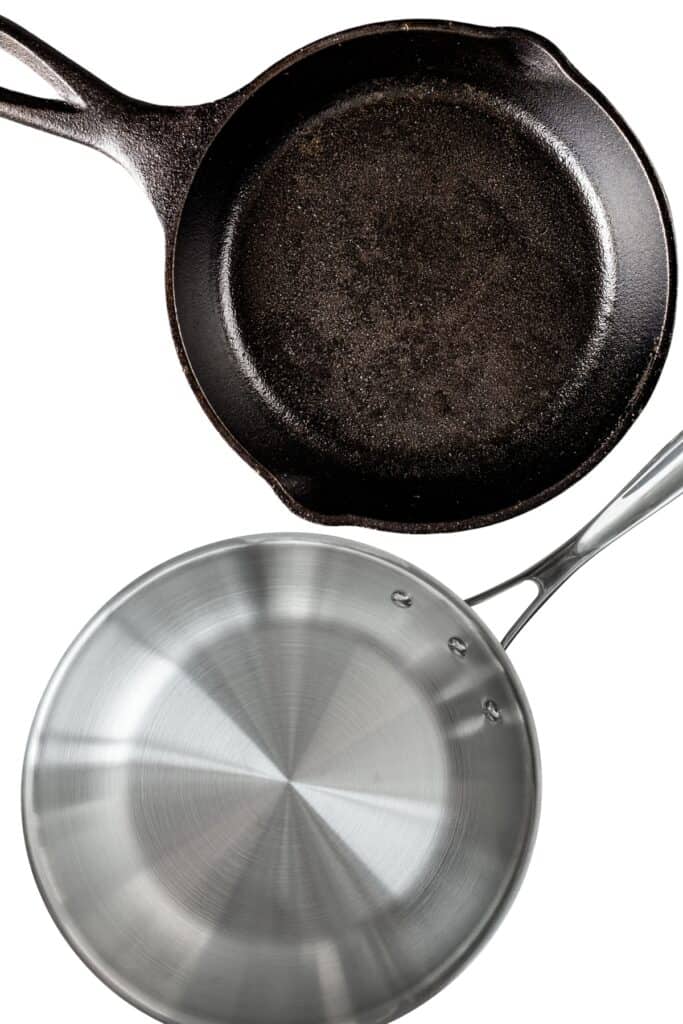
The best pan for searing steak is a well-seasoned cast iron pan or a heavy-bottomed stainless steel skillet. The heavy bottom ensures that the heat is evenly distributed and prevents hot spots from burning your steak.
Whatever pan you use, be sure it’s large enough for the job. The pan should be large enough to hold the steak with enough room around it not to overcrowd the pan. If the pan is too small, the steak will steam rather than sear, resulting in an unappetizing steak. When cooking more than one steak, I recommend cooking in batches if you don’t have a large enough pan.
Choosing A Steak
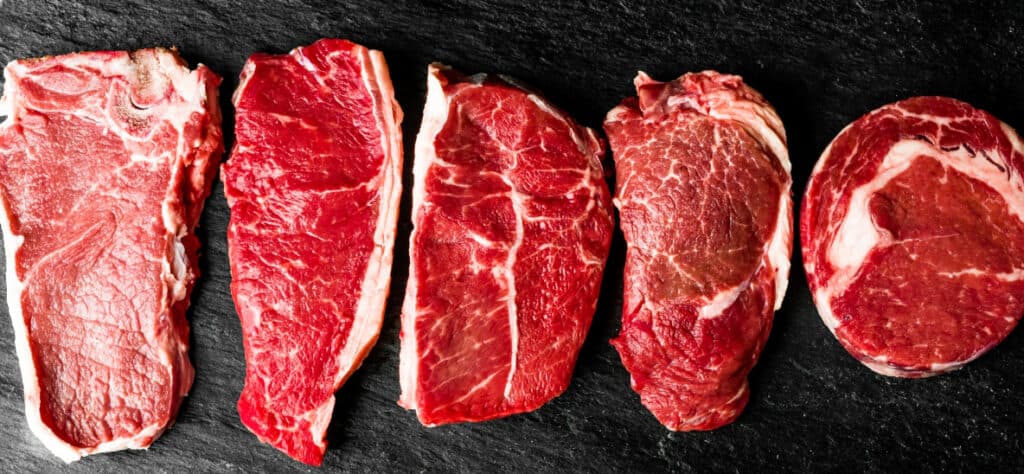
When buying steak, choose a cut that is of good quality. Look for meat that is well-marbled and has a nice red color.
The most common cuts of steak are ribeye, New York strip, sirloin, and filet mignon. All of these cuts will work perfectly for this recipe. If you’re on a budget, opt for a skirt or flank steak for a cut that won’t break the bank.
Whether you choose a bone-in or boneless steak, thicker steaks are best and easiest to work with, so I recommend selecting a steak that’s at least 1½ inches thick.
Steak Doneness Guide
Cooking the perfect steak is a balancing act. You want a beautifully seared, juicy steak that isn’t overcooked or undercooked. Here’s a quick guide to help you determine when your steak is done to the degree of doneness you prefer.
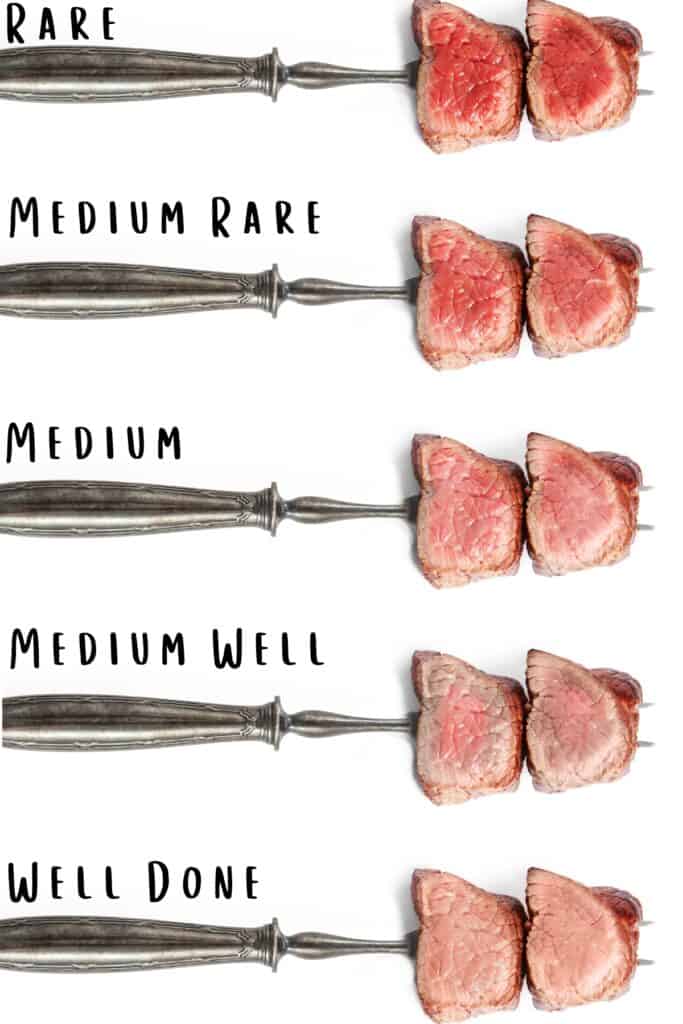
The key to a perfect steak is getting the doneness just right. The easiest way to measure the doneness of a steak is by using an instant-read thermometer inserted into the thickest part of the steak.
How to Use a Meat Thermometer
Start by inserting the thermometer into the thickest part of your steak, taking care not to touch any bone or fat. Read the temperature after 10 to 15 seconds and compare it to the table below.
Steak Internal Temperatures
The steak’s internal temperature will rise approximately five to ten degrees during resting time. Remove the steak from the heat five to ten degrees below the preferred serving temperature. The residual heat (called carryover cooking) finishes the cooking for you.
To get the best results, follow the ‘cook to’ temperatures below until the steak reaches your preferred doneness temperature; this will take five to ten minutes (see the image above for a visual guide)
If your main concern is food safety, cook the steak until medium-well.
| Doneness | Cook To | Rest To |
| Rare | 120 to 125°F 49 to 51°C | 125 to 130°F 51 to 54°C |
| Medium Rare | 130 to 135°F 54 to 57°C | 135 to 140°F 54 to 60°C |
| Medium | 135 to 140°F 57 to 60°C | 140 to 145°F 60 to 63°C |
| Medium Well | 145 to 155°F 63 to 68°C | 155 to 159°F 68 to 70°C |
| Well Done | 150°F 66°C | 160°F 68°C |
Download the above Steak Temperature Table to print or save for later.
Step By Step Cooking Instructions
For succulent steak, start by coating the whole surface of your cut with salt and refrigerate for up to two days. This step is important as it makes the meat tender and juicier by breaking down the lean muscle proteins.
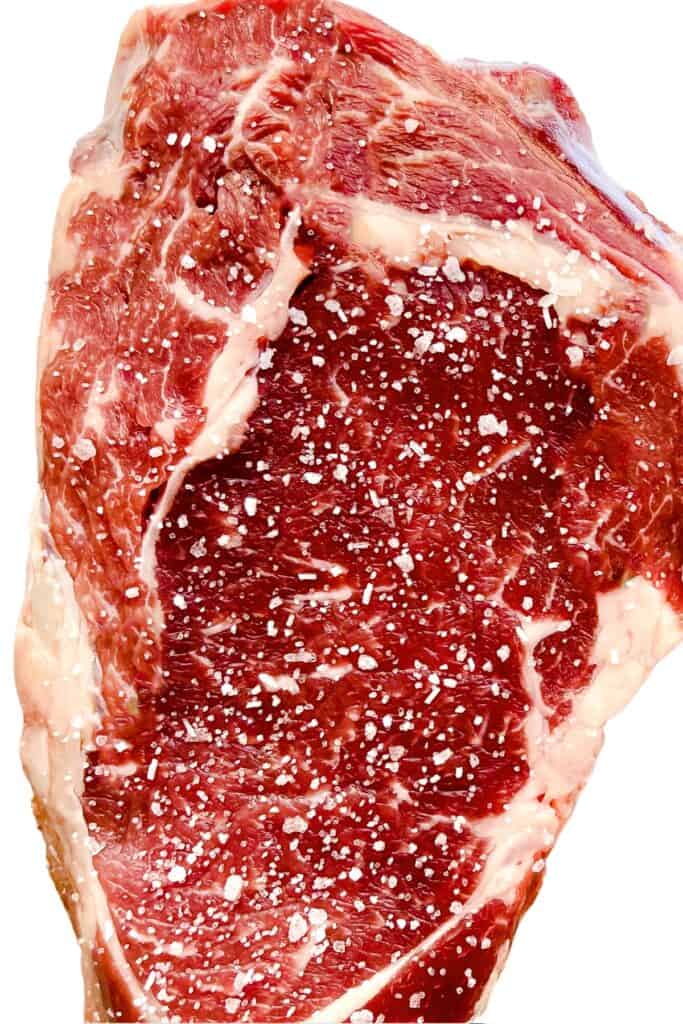
Remove the steak from the fridge 30 minutes before cooking and pat it dry with paper towels.
If the steak has a layer of fat, trim it to your liking and score the fat layer with a knife making the cuts one to two inches apart. This will help the fat render and cook down easier.
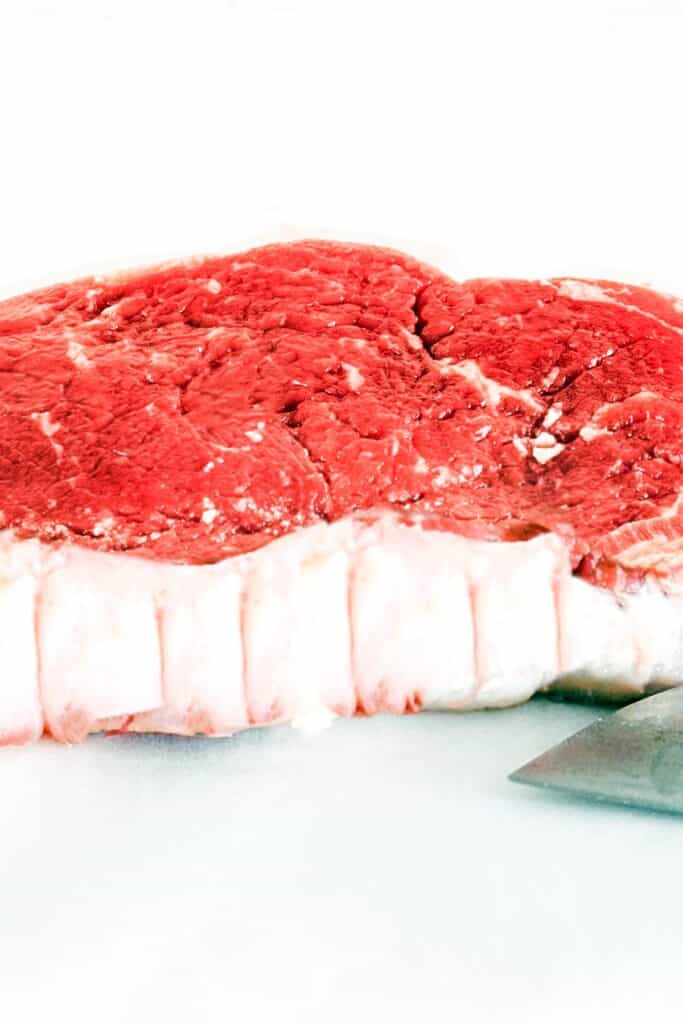
A meat thermometer that can be inserted into the steak as it cooks is a great tool to keep track of the cooking process the entire time.
Add the oil to the pan and preheat the pan over high heat until the oil shimmers and starts to smoke slightly.
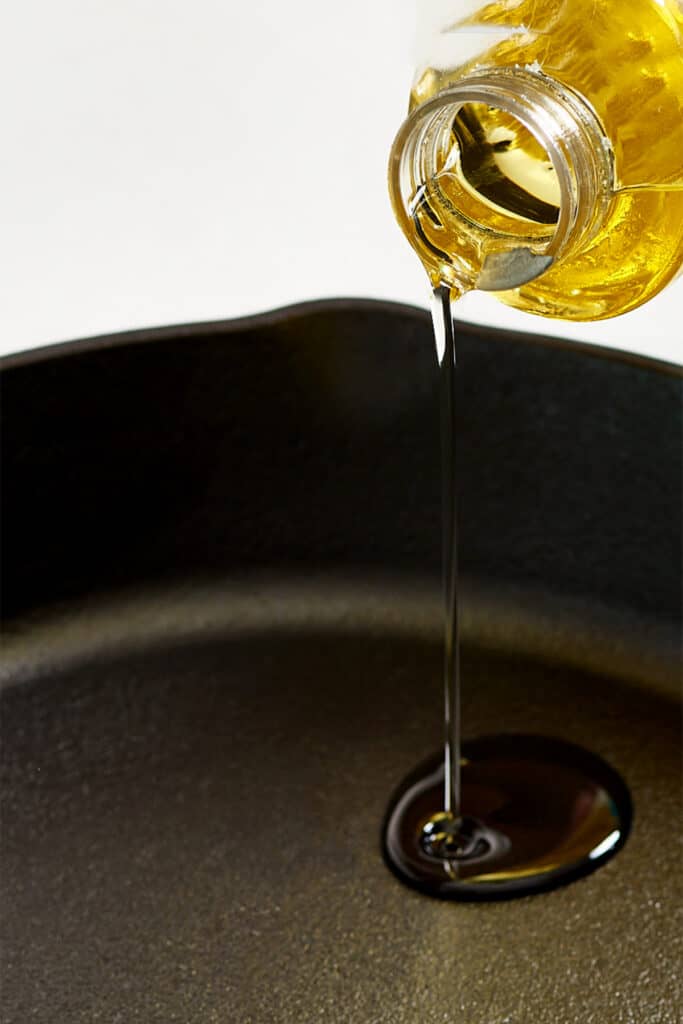
The best oil for searing steak is one with a high smoke point and a neutral flavor that won’t overpower the taste of the meat. Oils with high smoke points can withstand the high heat required for searing without burning or smoking. Some great options for searing steak include grapeseed, canola, or sunflower.
Reduce the heat to medium when the oil is hot, and add the steak. Cook the steak without moving it for three minutes. This should allow a good crisp sear.
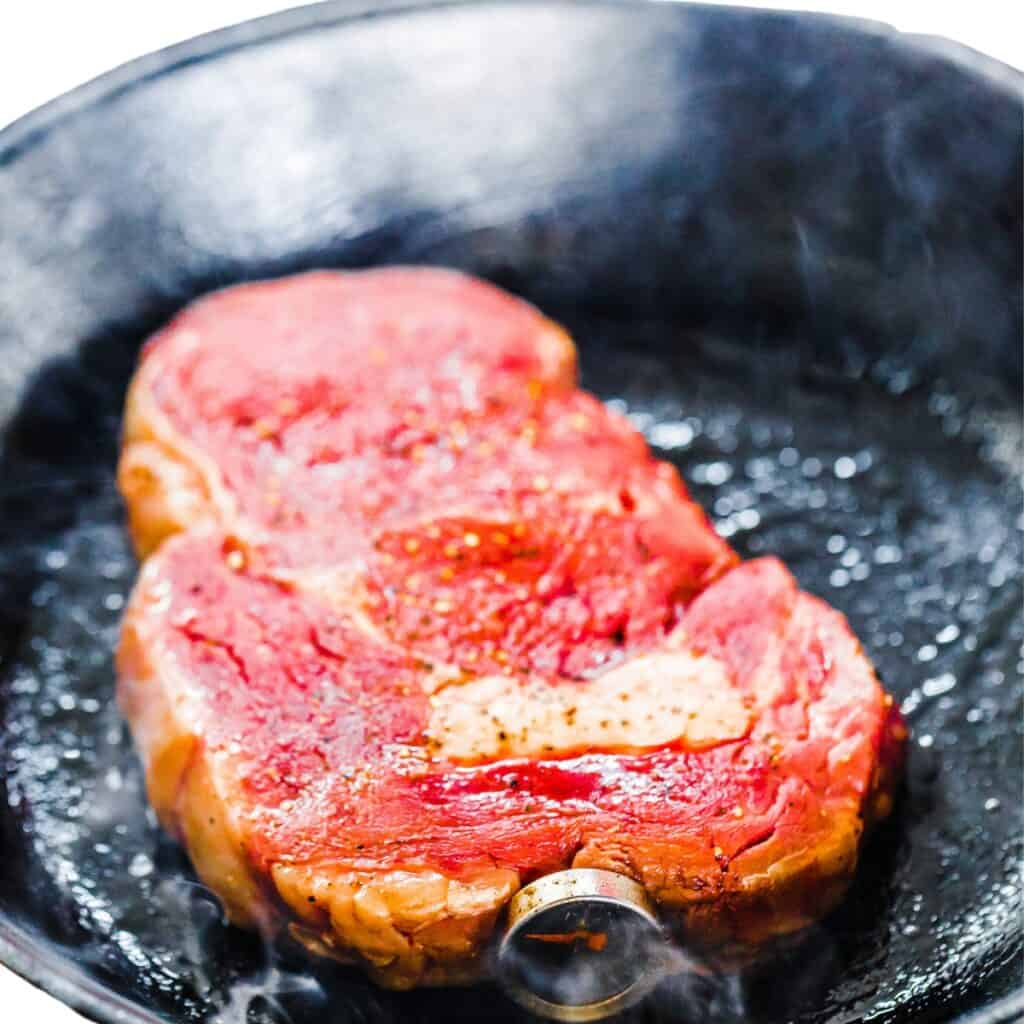
Flip the steak over to the uncooked side and cook for another two minutes to sear.
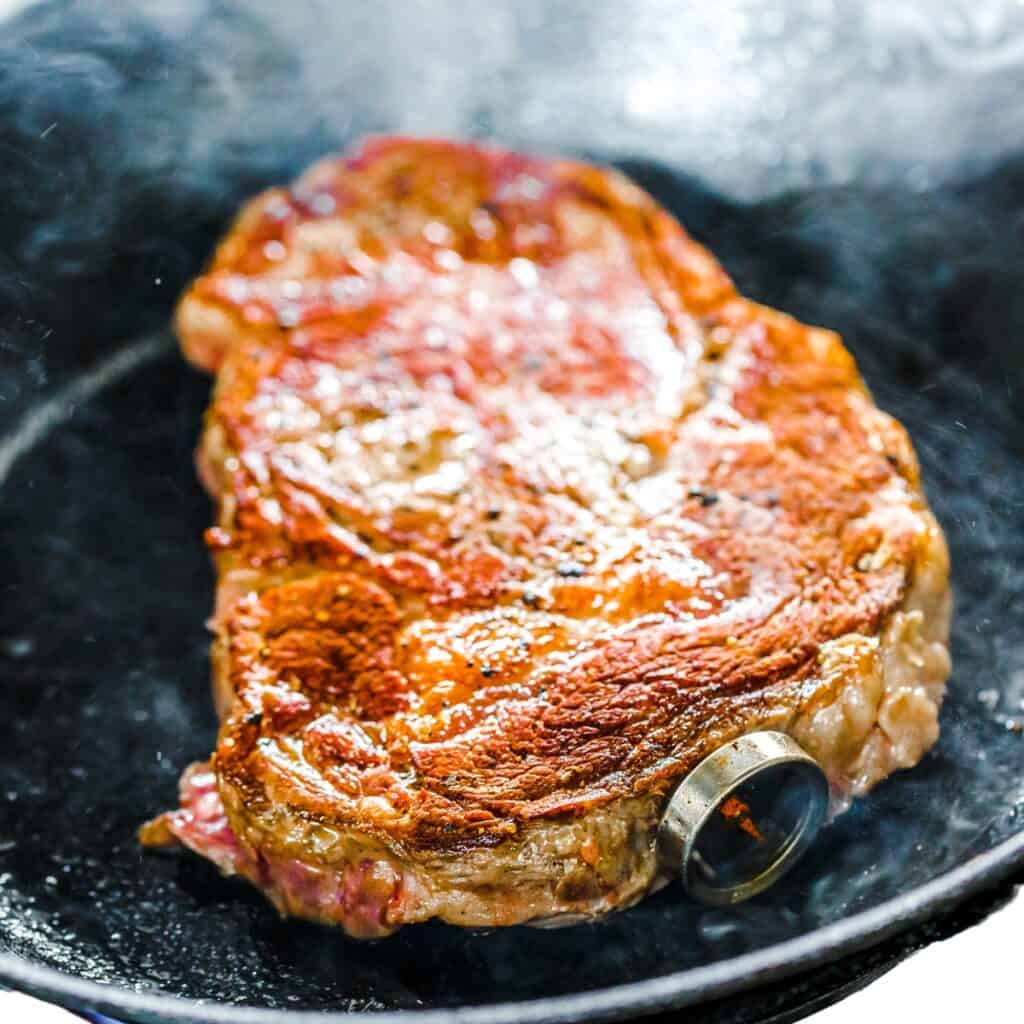
Add the butter, garlic, and herbs to the pan and allow the butter to melt.
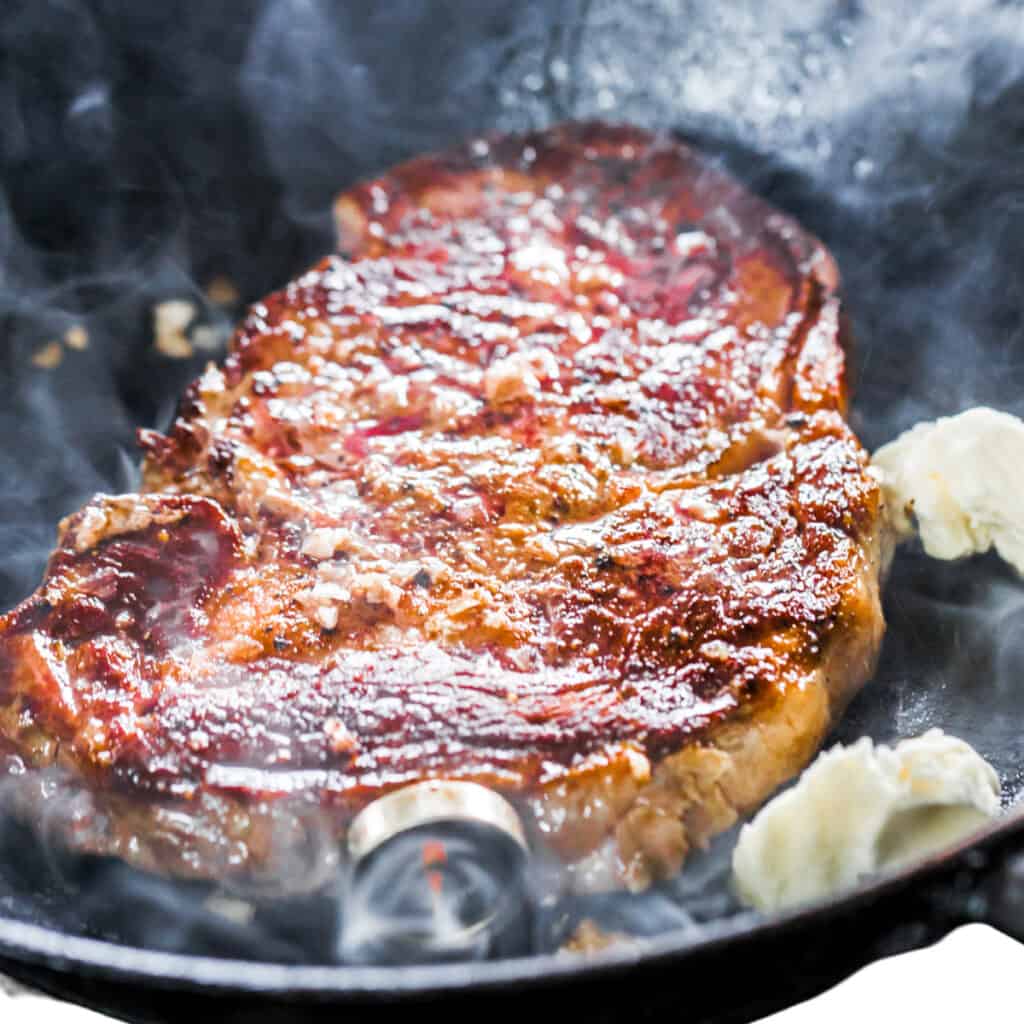
Keep turning the steak every 2 minutes while basting with butter until both sides are deep golden brown and your desired doneness is reached (see the steak doneness guide above for more information).
If the fat is thick and hasn’t cooked down, pick up the steak with tongs and hold it upright, with the fatty edge on the pan. Cook until the fat gets crisp and brown (about 2 minutes).
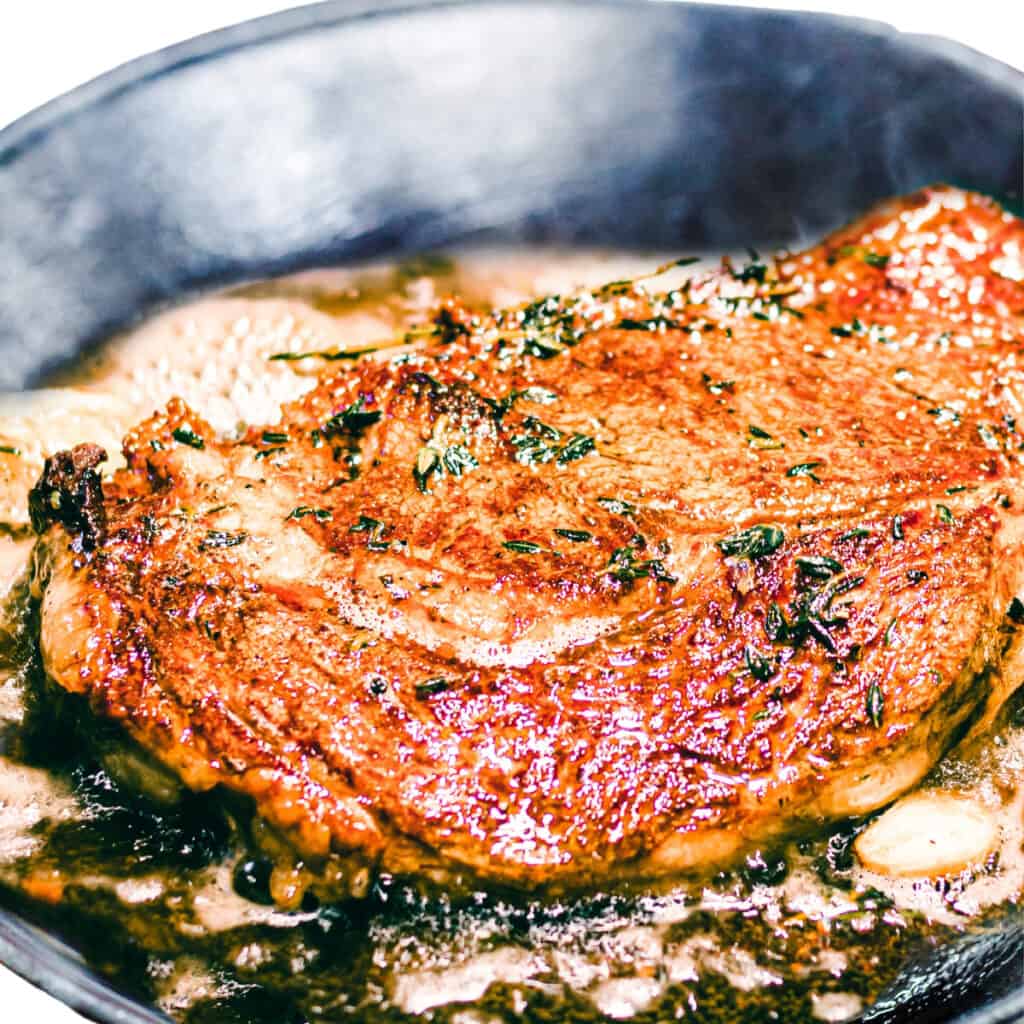
Remove from the heat top with ½ tablespoon of butter and allow to melt. Spread the butter over the steak and allow it to rest until the internal temperature reaches your desired temperature.
Serve and enjoy.
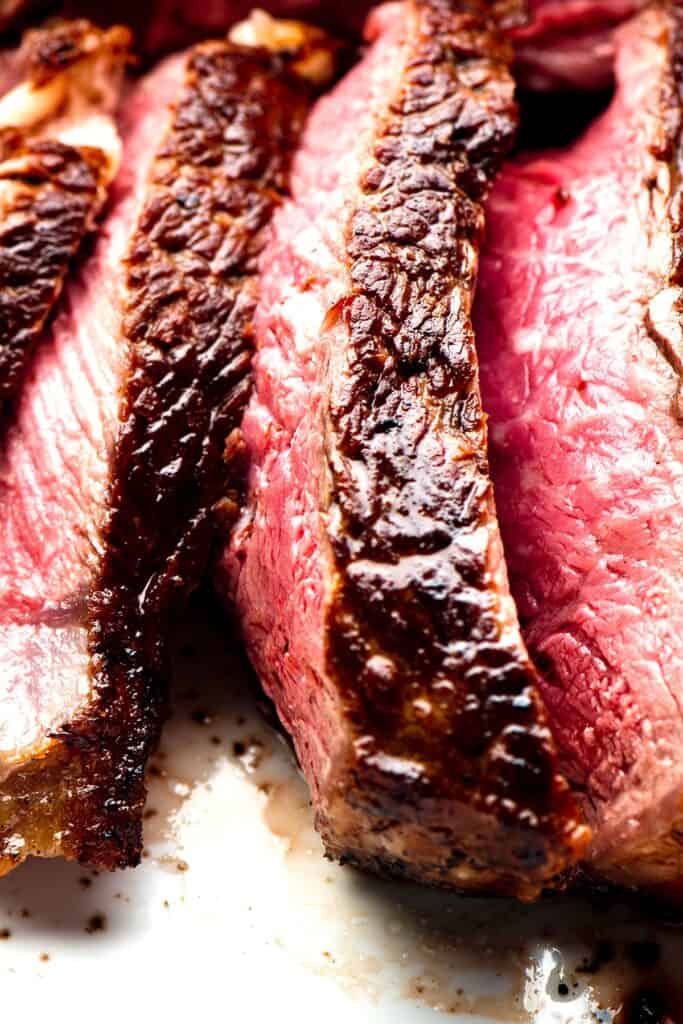
Erren’s Top Tips
- Be sure to use an oil with a high smoke point, such as canola, vegetable, sunflower, or grapeseed oil.
- Cook in batches – when making more than one steak, if your pan isn’t large enough to allow about two inches between the steaks, don’t try to sear them together.
- A meat thermometer guarantees that your pan-fried steak is cooked to your liking and helps avoid overcooking. See the steak doneness guide in the post for more information.
- If the fat is thick and hasn’t cooked down, pick the steak up with tongs and hold it upright, with the fatty edge of the pan. Cook until the fat get’s crisp and brown.
- When searing your steak, don’t be tempted to move it around. Let it cook undisturbed to allow constant contact with the pan.
The Perfect Pairings
Toppings
- Love Mushrooms? Our Easy Sautéed Mushrooms and Creamy Garlic Mushrooms work wonderfully as a steak topping.
- If you enjoy a sweeter option, our Burger Onions are a delicious choice.
Sides
- Are you a lover of mashed potatoes? Pan fried steak goes great with our Classic Mashed Potatoes and Sour Cream Mashed Potatoes. If sweet potatoes are more you’re thing, try our Creamy Mashed Sweet Potatoes.
- If you love roasted potatoes, our Crispy Roasted Potatoes and Garlic Roasted Potatoes are always a hit and go great with steak.
- Roasted vegetables such as our Roasted Broccoli, Brussels Sprouts, Garlic Roasted String Beans, and Roasted Asparagus are all wonderful options. Or if you like something with a little sauce, try our creamy Brussels Sprouts with Bacon.
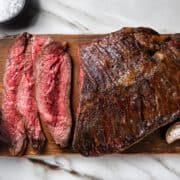
Recipe
Pan Fried Steak
Ingredients
- 1 steak (at least 8oz and 1½ inches (4cm) thick)
- 2 tablespoons oil (with a high smoke point such as grapeseed, canola, or sunflower)
- 2 garlic cloves whole (unpeeled)
- 2 sprigs fresh thyme ((or rosemary) plus more if desired)
- 2 tablespoons butter
Instructions
- Rub the salt over the entire surface of the steak. Transfer to a plate and refrigerate for 45 minutes to 2 days.
- Remove the steak from the fridge 30 minutes before cooking and pat it dry with paper towels.
- If the steak has a layer of fat, trim to your liking and score the fat layer with a knife making the cuts about 2 inches apart.
- Add the oil to the pan and preheat the pan over high heat until the oil shimmers and starts to smoke slightly.
- Once the oil is hot, reduce the heat to medium and add the steak to the pan. Cook undisturbed for 3 minutes (it should be golden brown).
- Flip the steak to the uncooked side down and cook another 2 minutes to sear. Add the butter, thyme and garlic to the pan and allow to melt. Keep turning the steak every 2 minutes while basting with butter until both sides are deep golden brown and they reach 130 to 135°F (54-57°C) for medium-rare or 135 to 140°F (57 to 60°C) for medium in the thickest part of the steak.
- If the fat is thick and hasn’t cooked down, pick up the steak with tongs and hold it upright, with the fatty edge on the pan. Cook until the fat gets crisp and brown (about 2 minutes).
- Remove from the heat top with ½ tablespoon of butter and allow to melt and spread the butter over the steak.
- Transfer the steak to a plate or board, cover loosely with foil, and allow to rest until it reaches an internal temperature of 135 to 140°F/54 to 60°For Medium Rare or 140 to 145°F/60 to 63°C for medium doneness before serving.
Tips
- Be sure to use an oil with a high smoke point, such as canola, vegetable, sunflower, or grapeseed oil.
- Cook in batches – when making more than one steak, if your pan isn’t large enough to allow about two inches between the steaks, don’t try to sear them together.
- A meat thermometer guarantees that your pan-fried steak is cooked to your liking and helps avoid overcooking. See the steak doneness guide in the post for more information.
- If the fat is thick and hasn’t cooked down, pick the steak up with tongs and hold it upright, with the fatty edge of the pan. Cook until the fat get’s crisp and brown.
- When searing your steak, don’t be tempted to move it around. Let it cook undisturbed to allow constant contact with the pan.
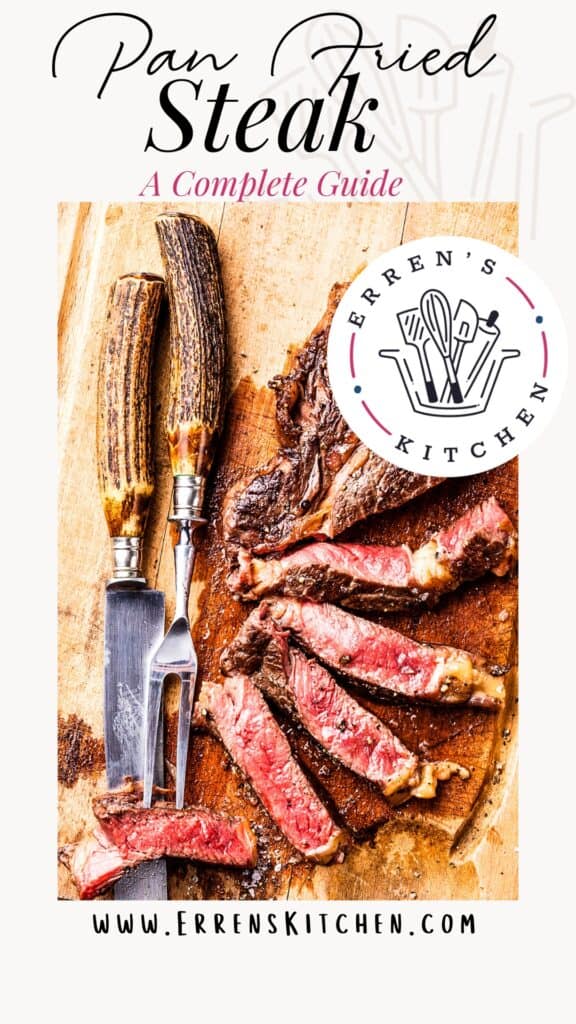
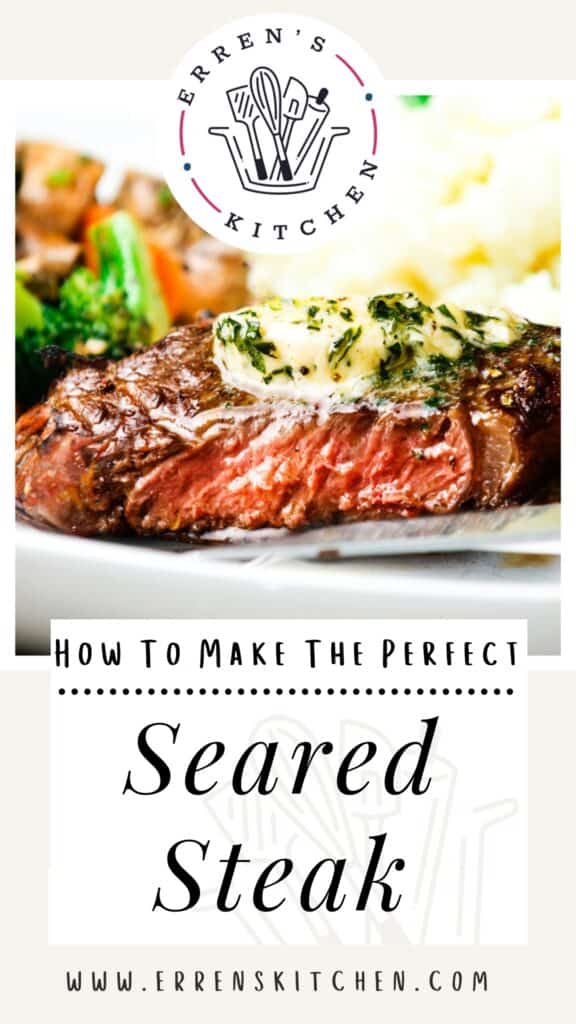
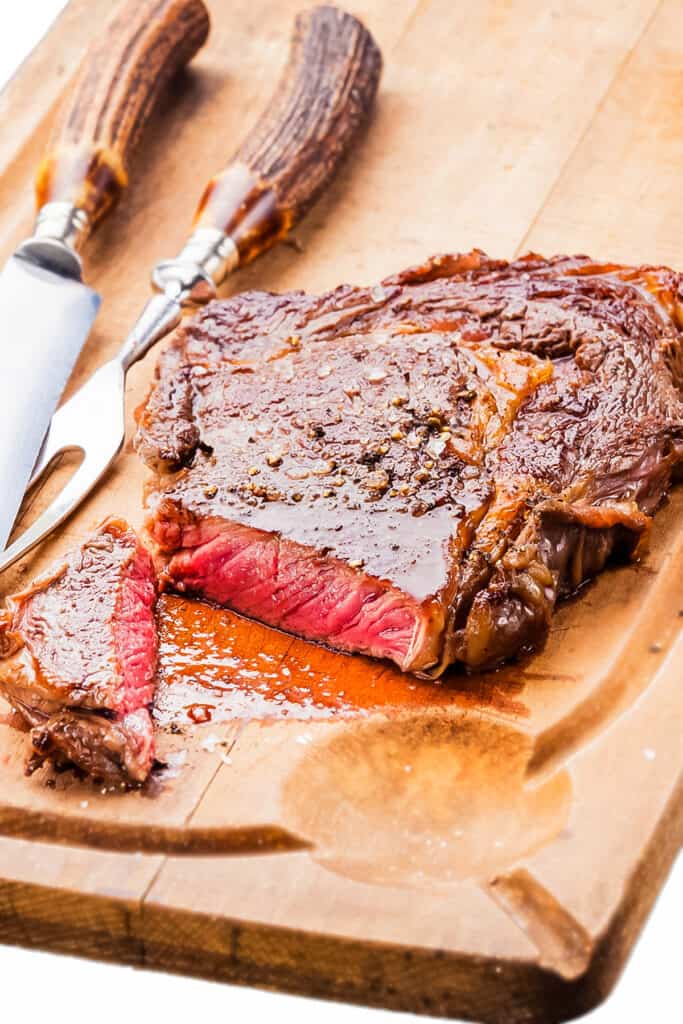
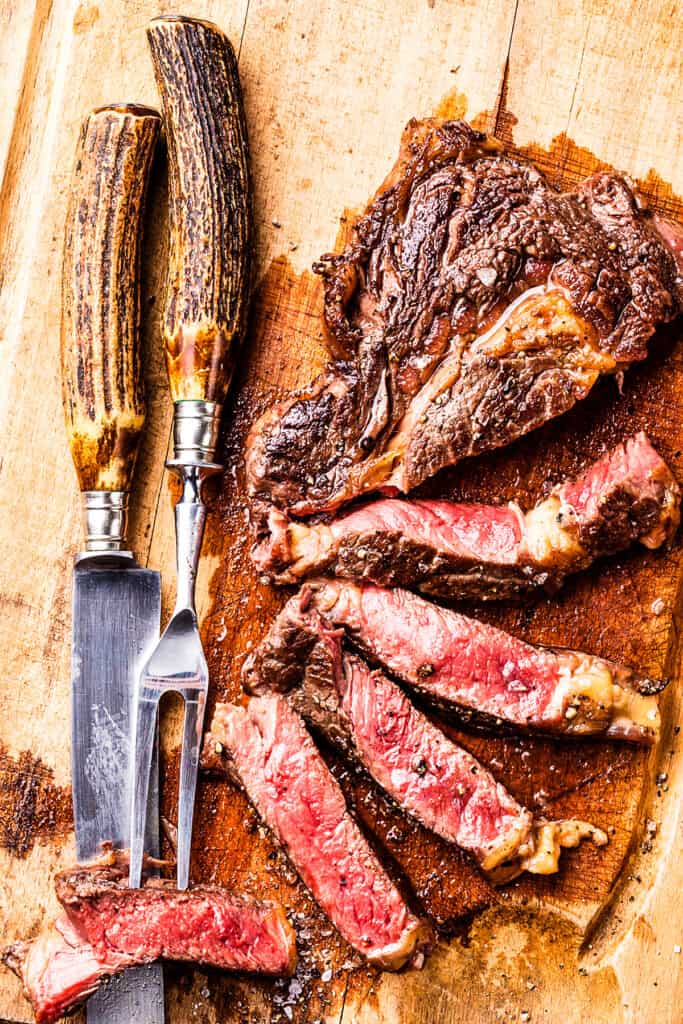
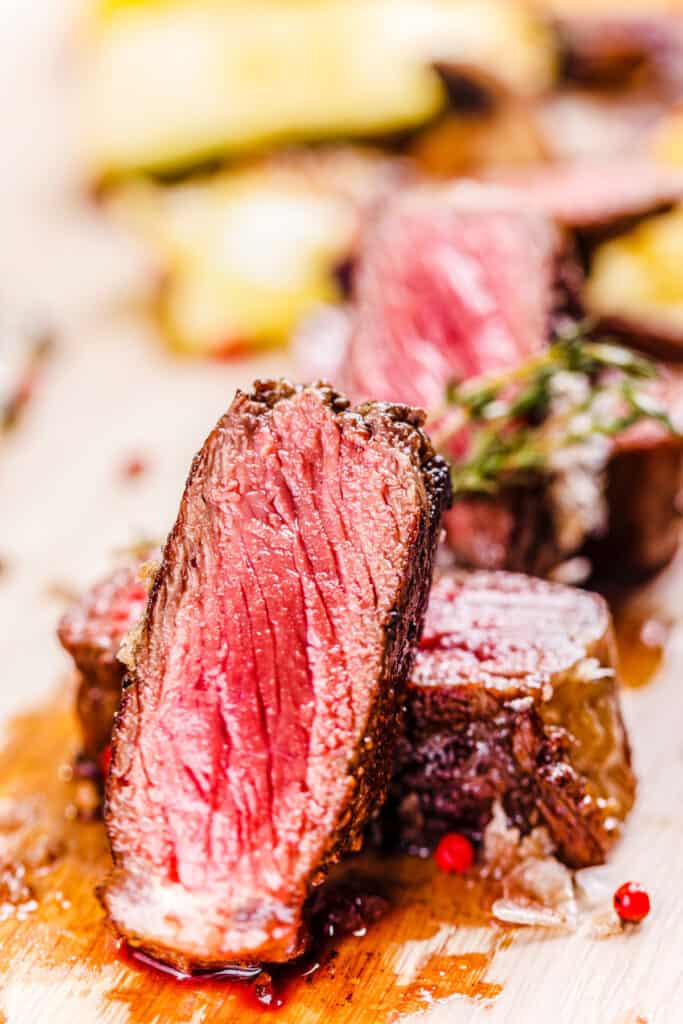
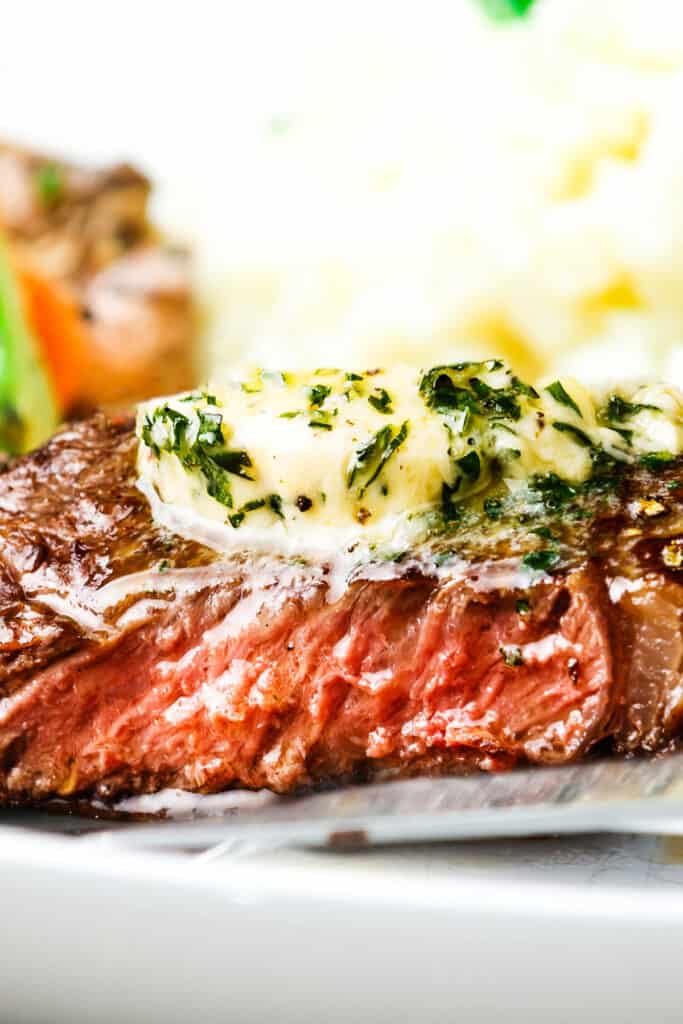
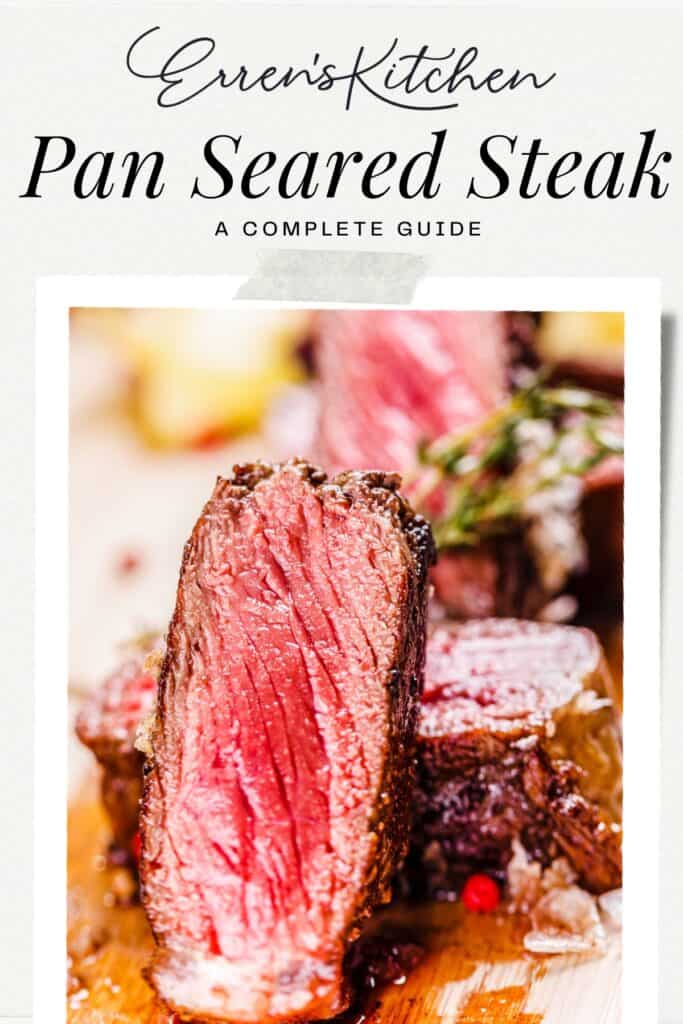

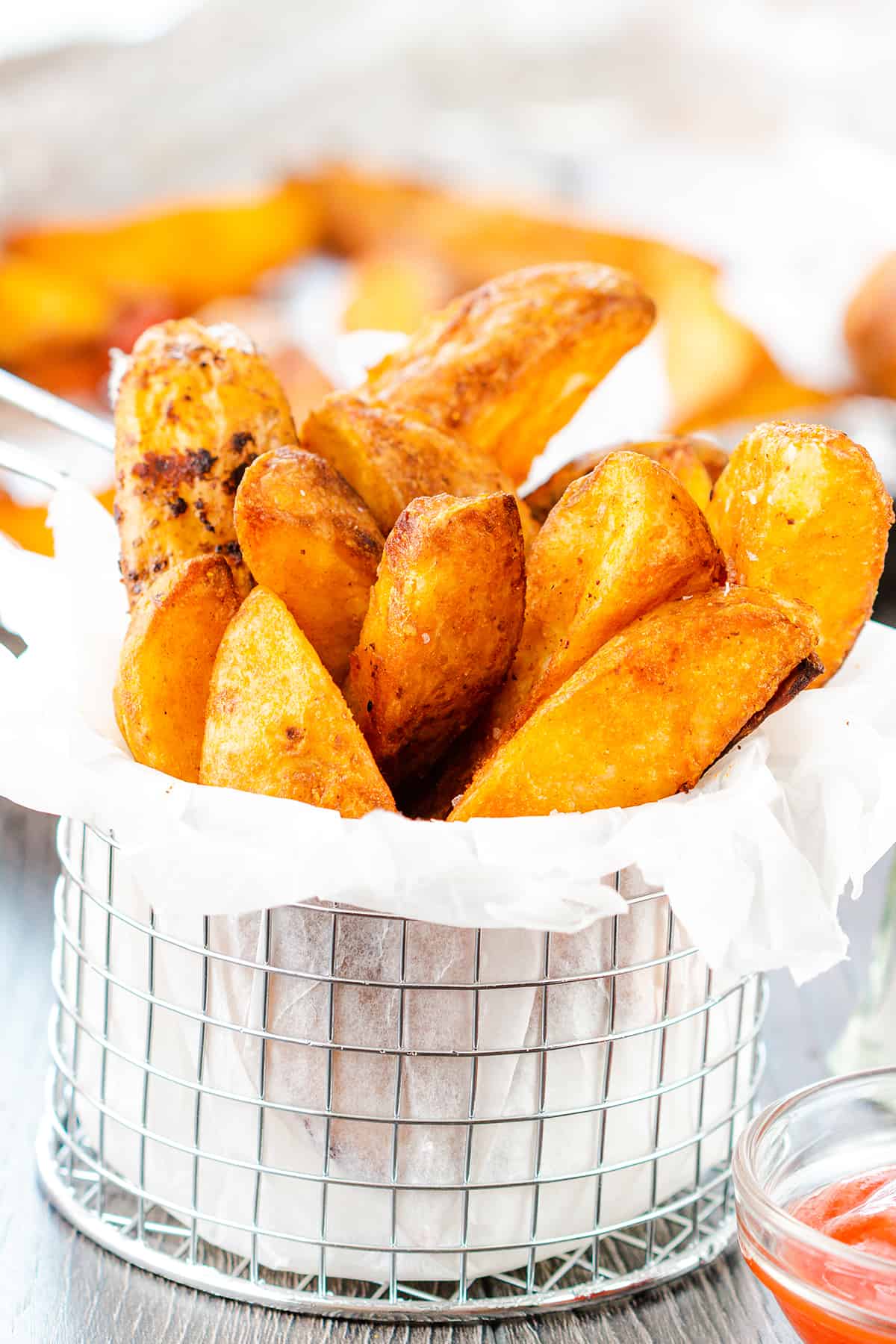
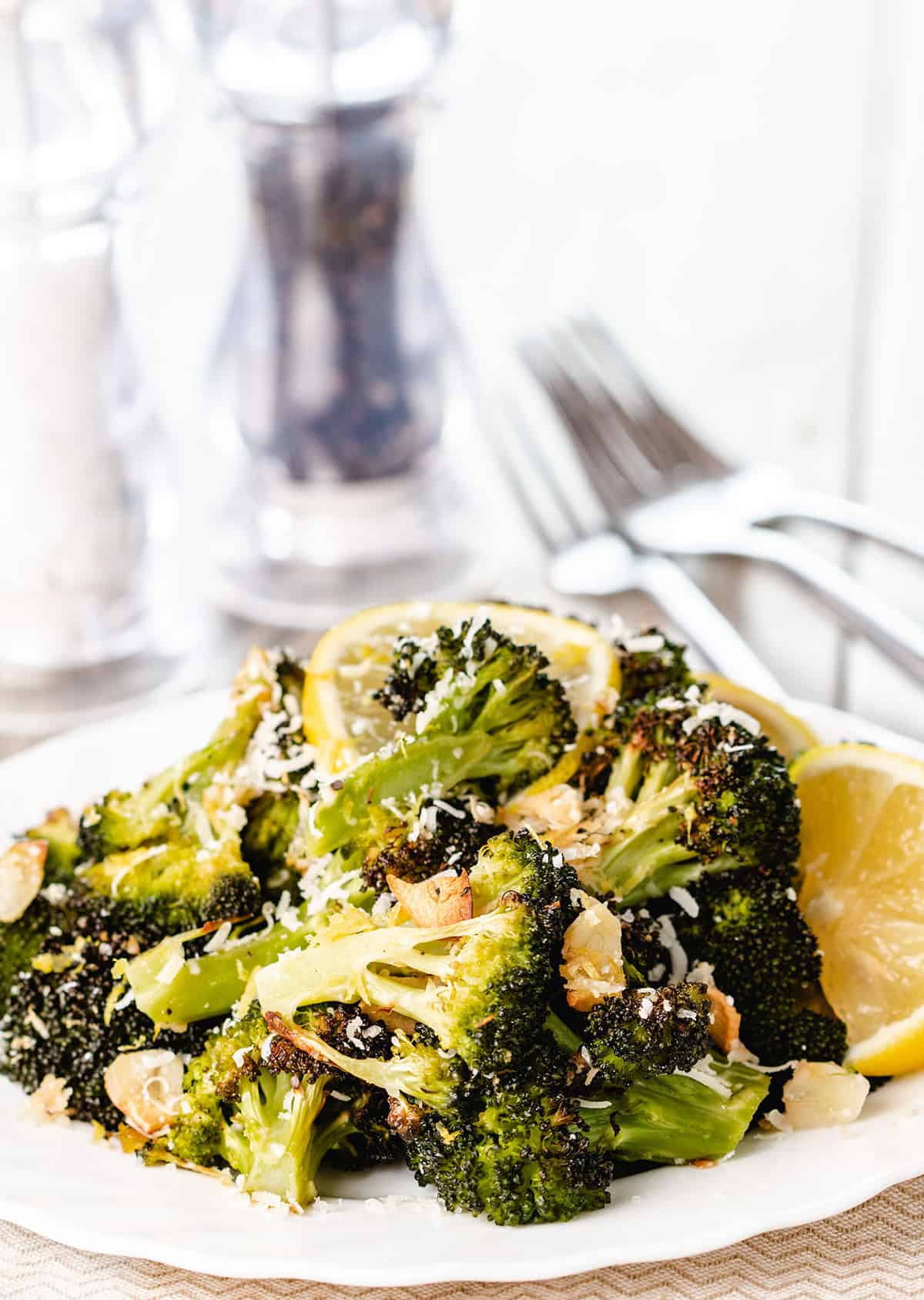
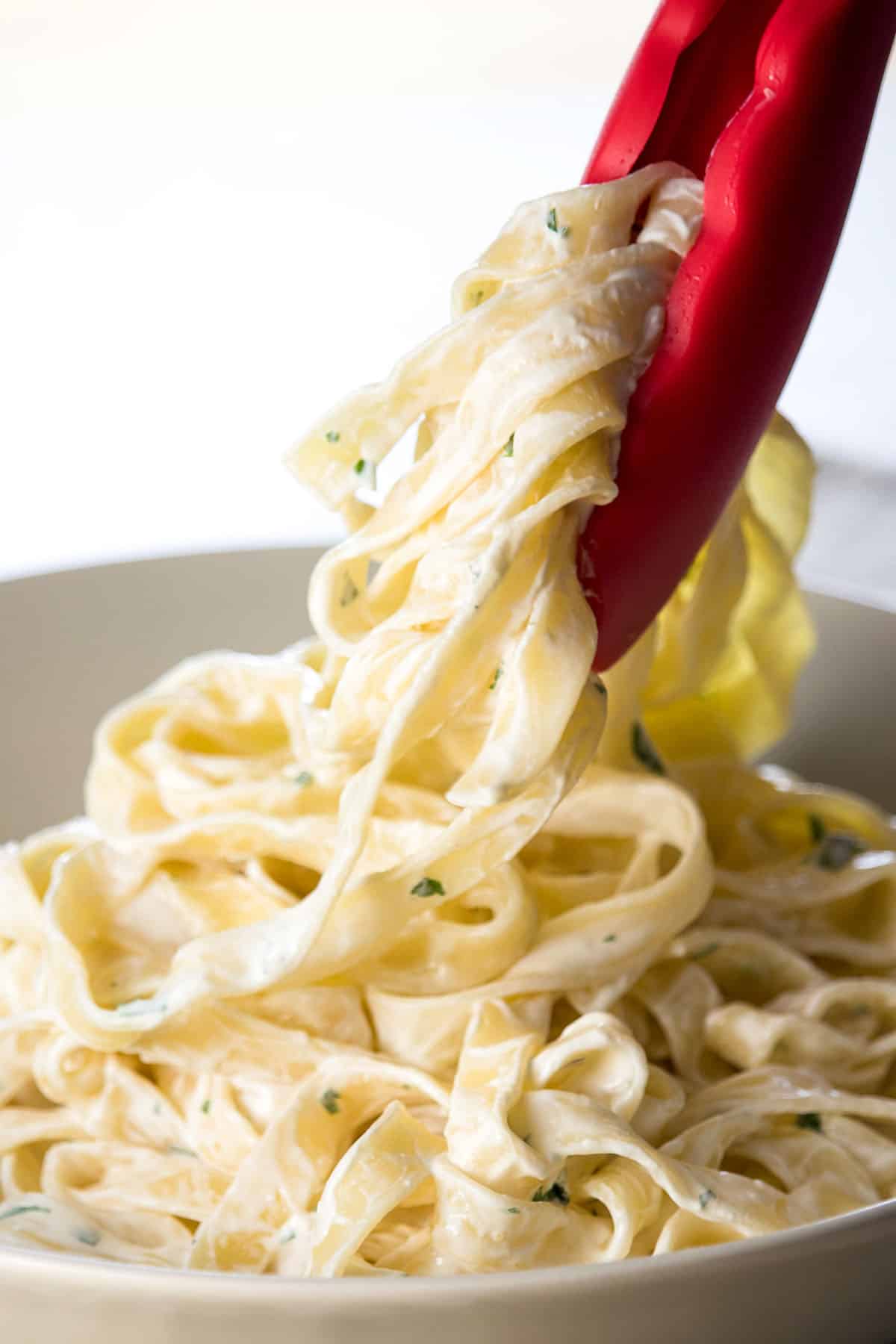
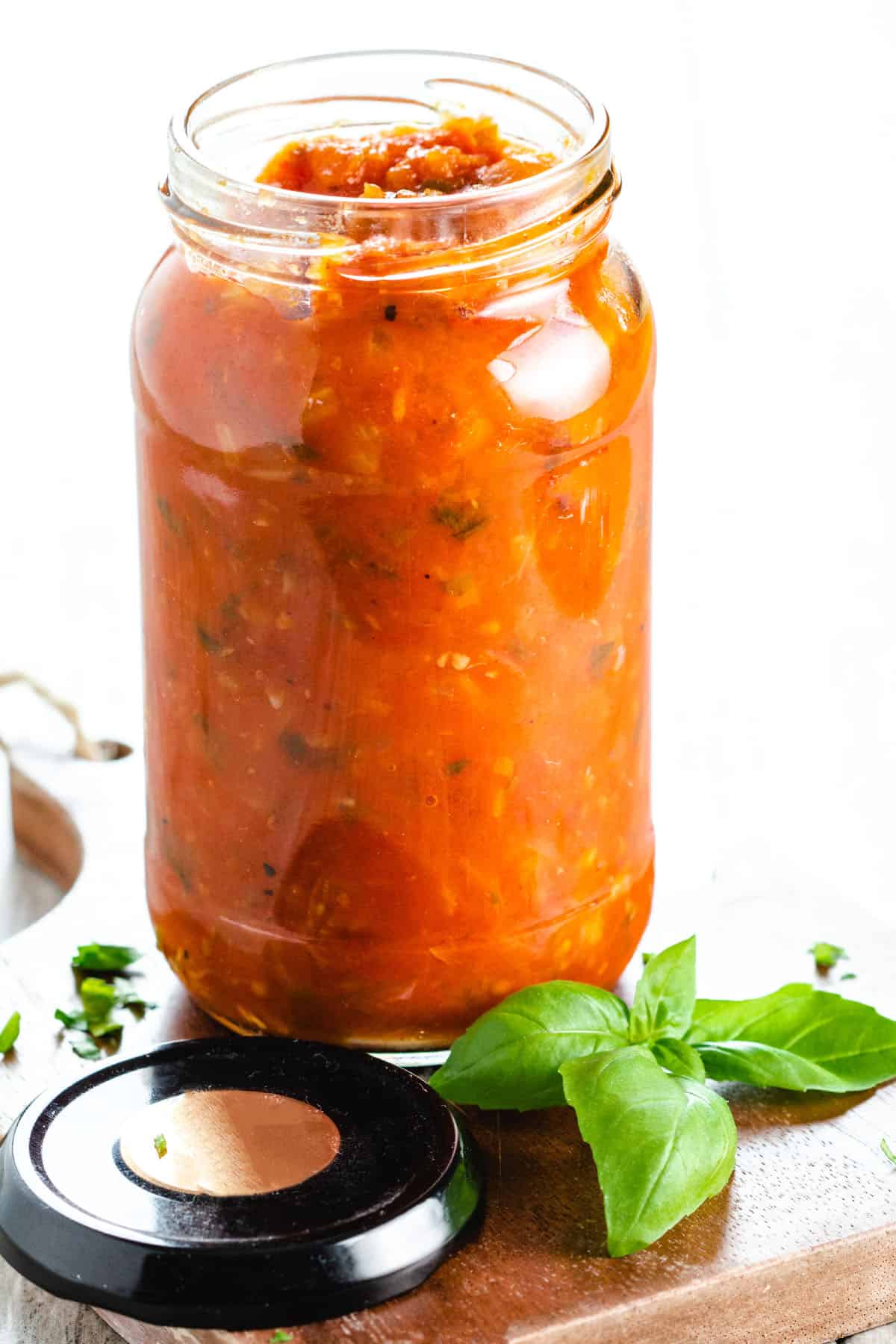
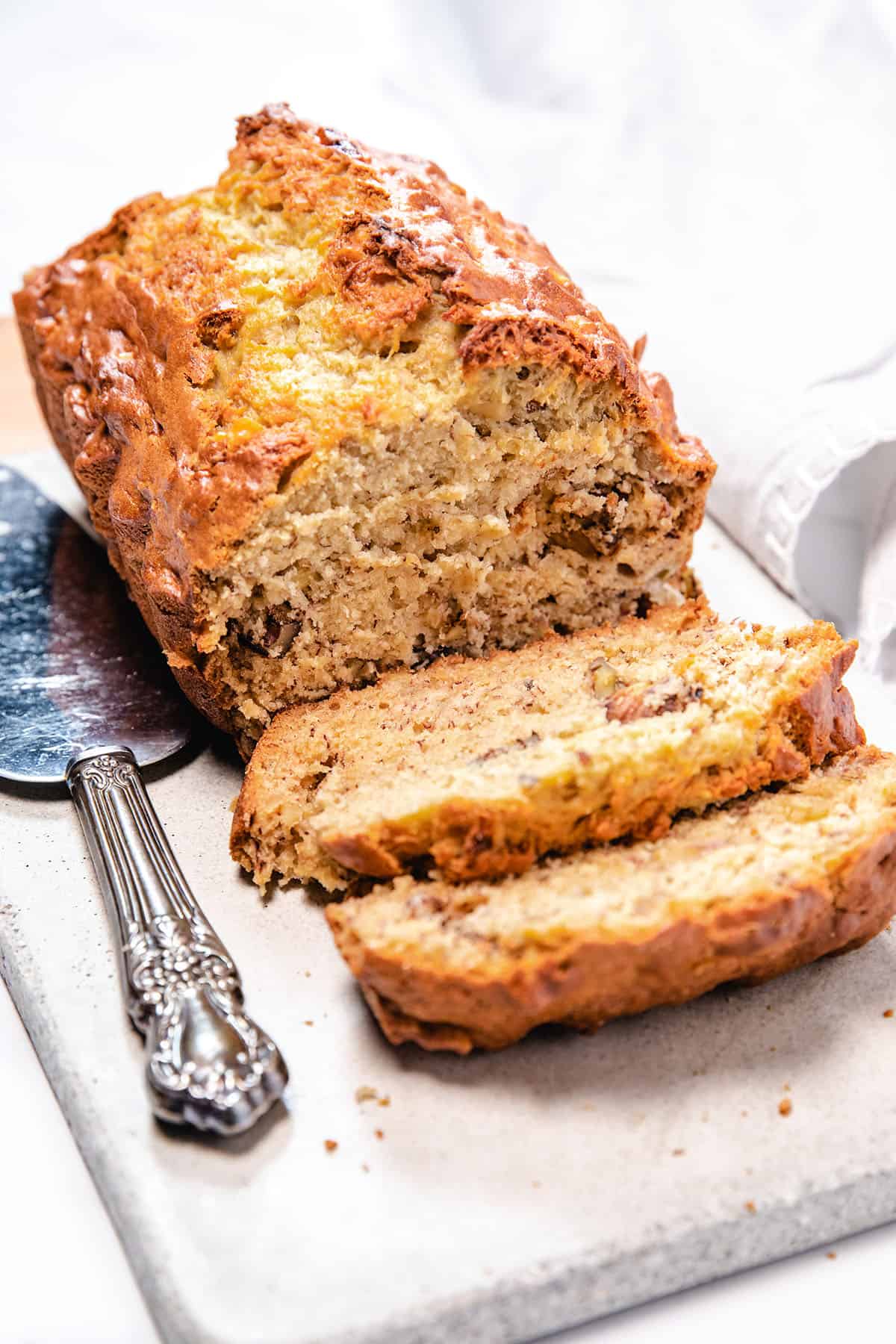
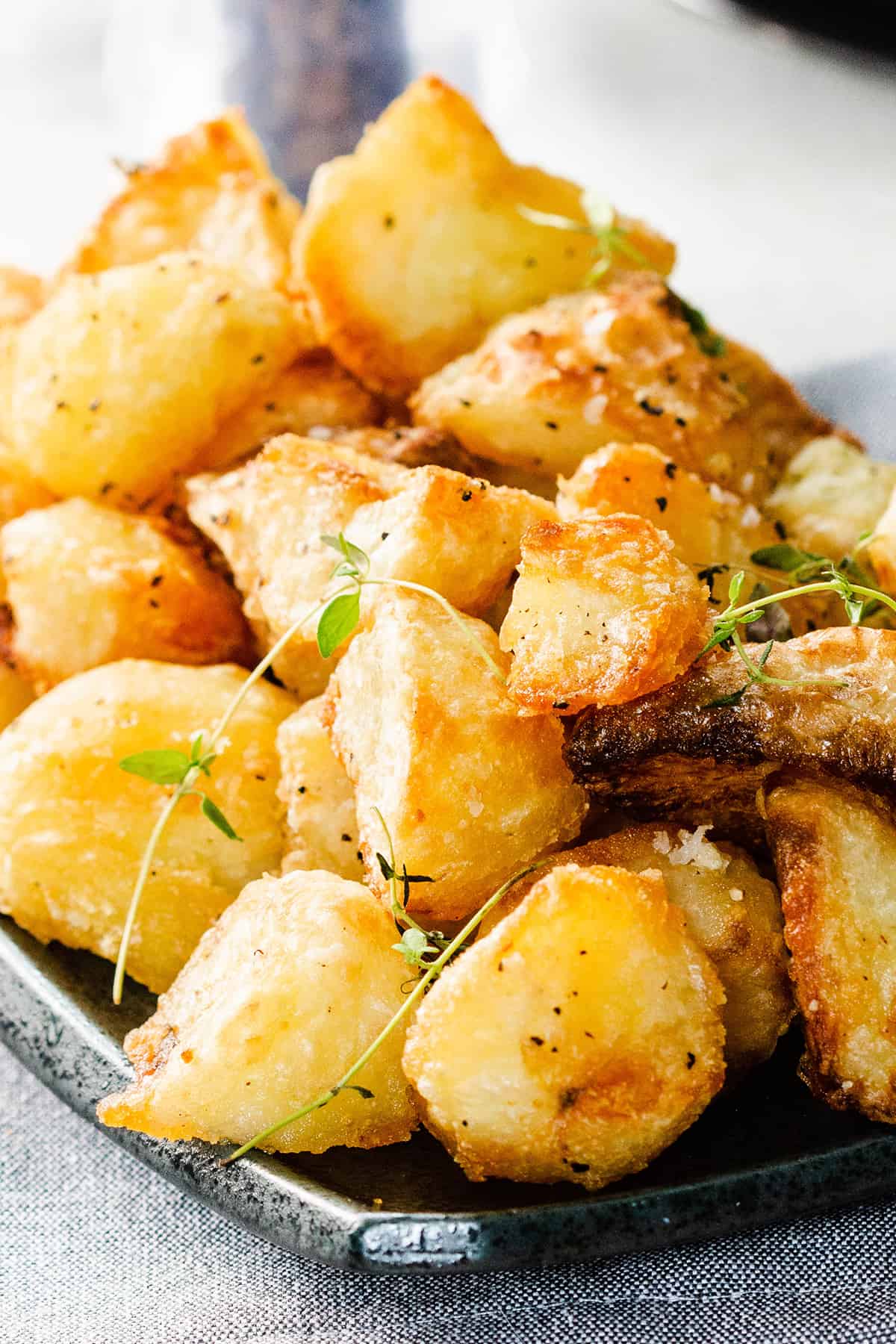
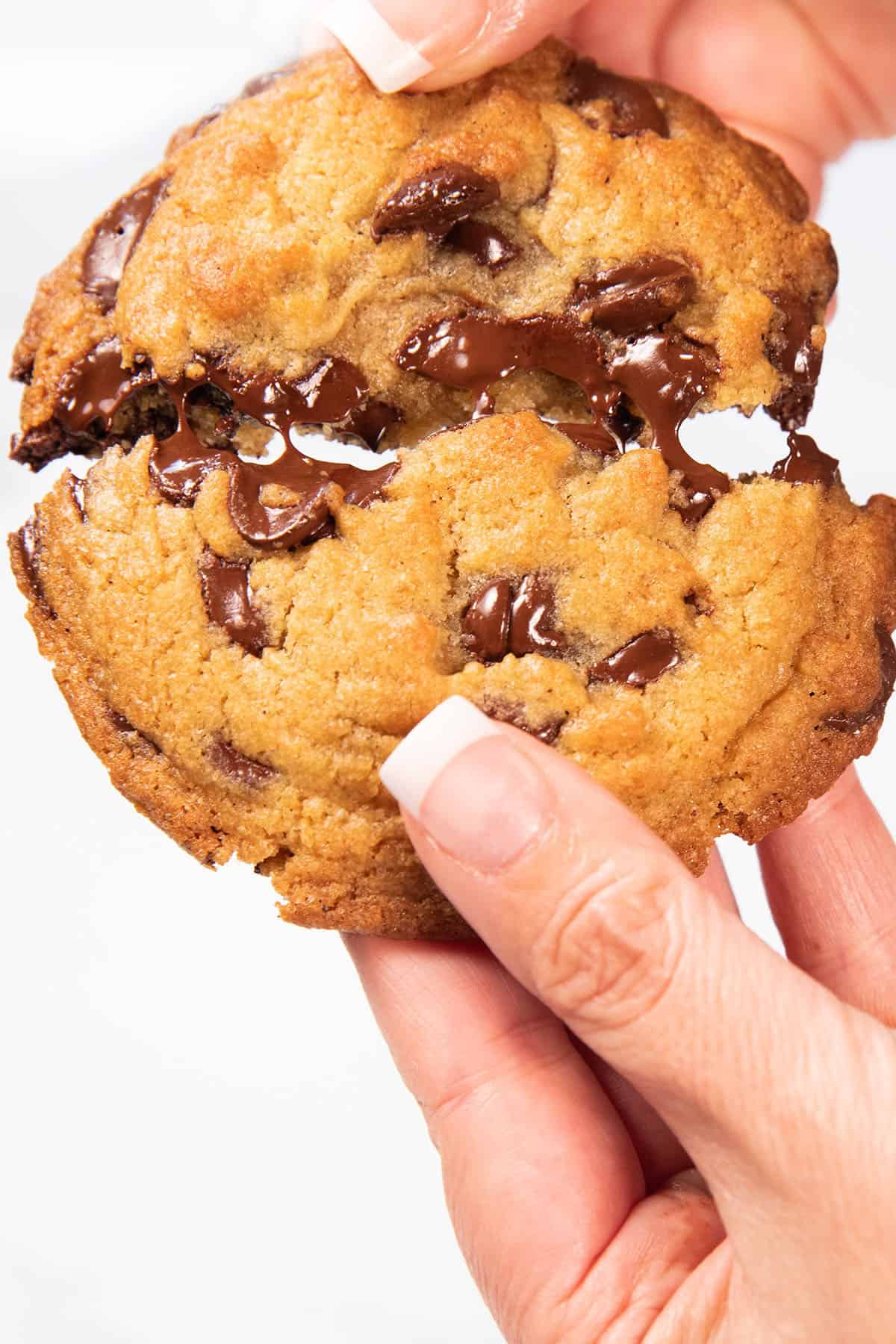
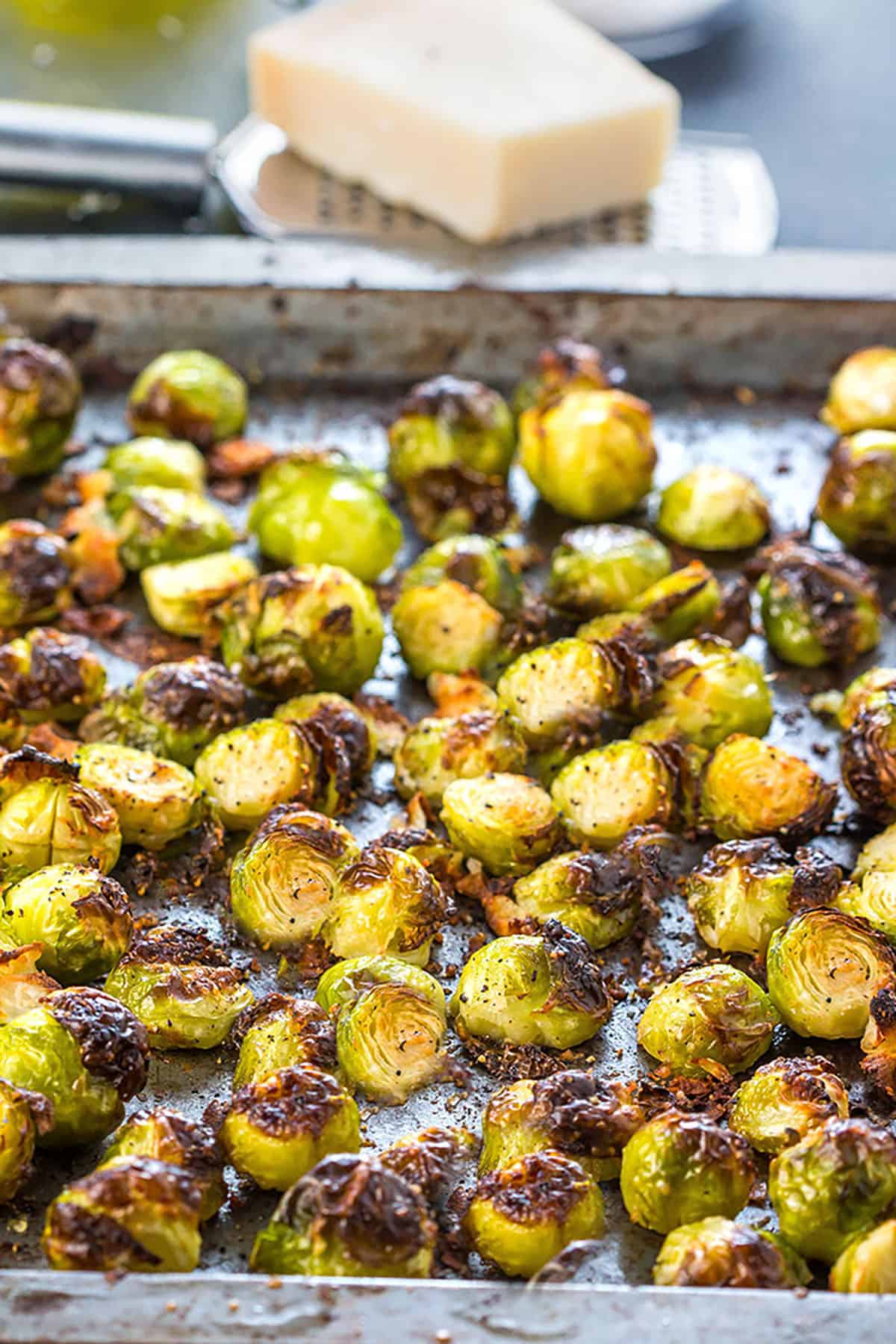
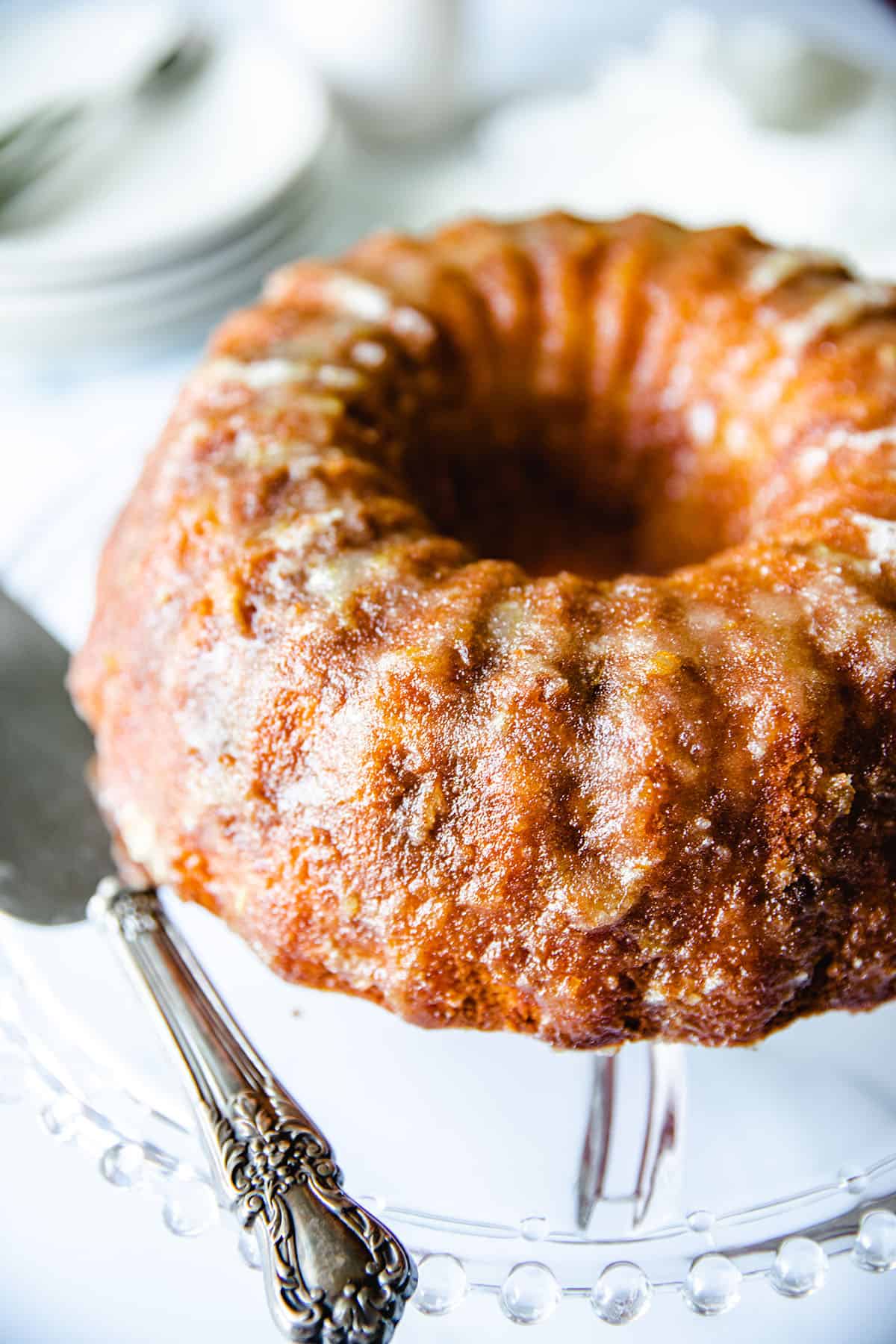
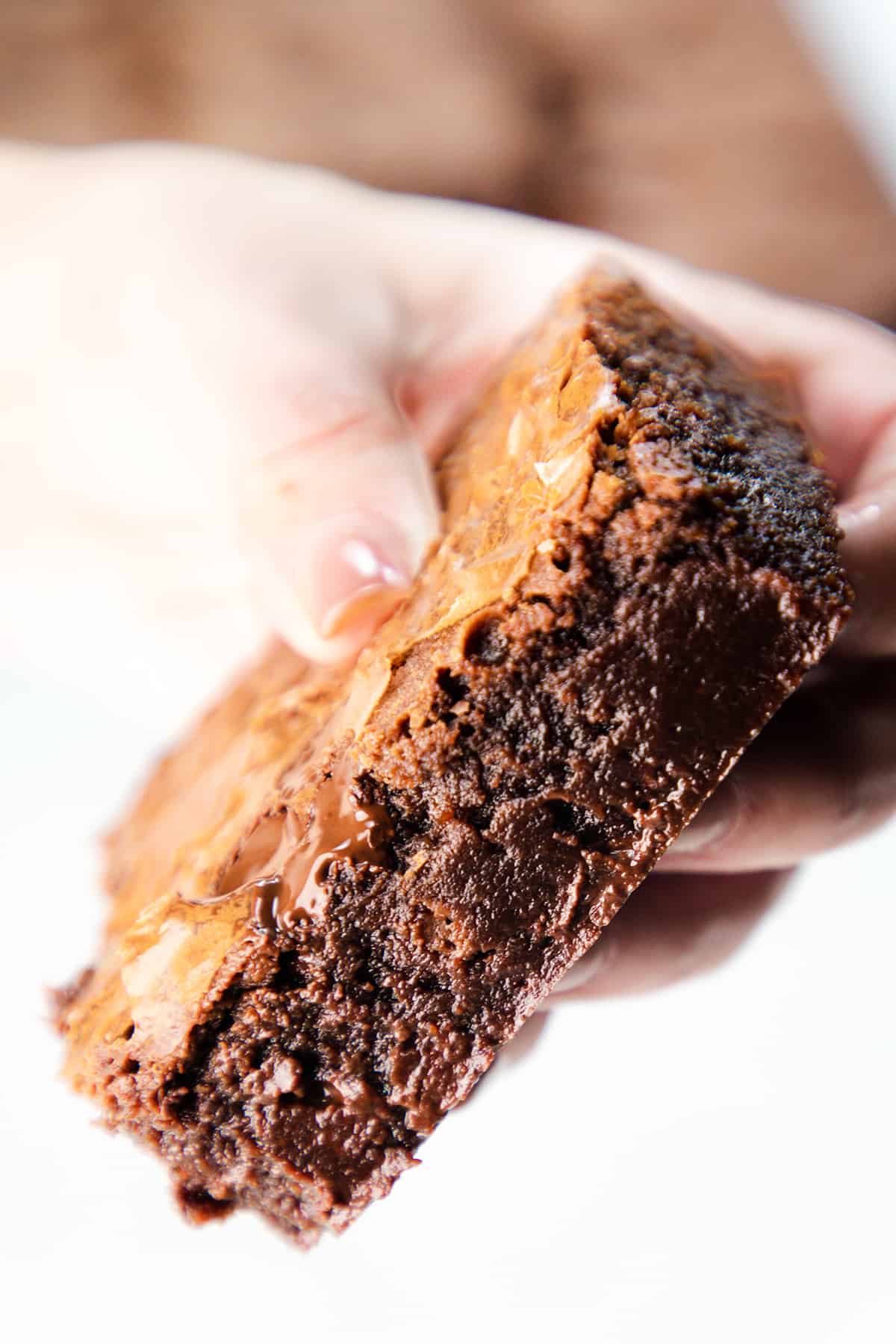
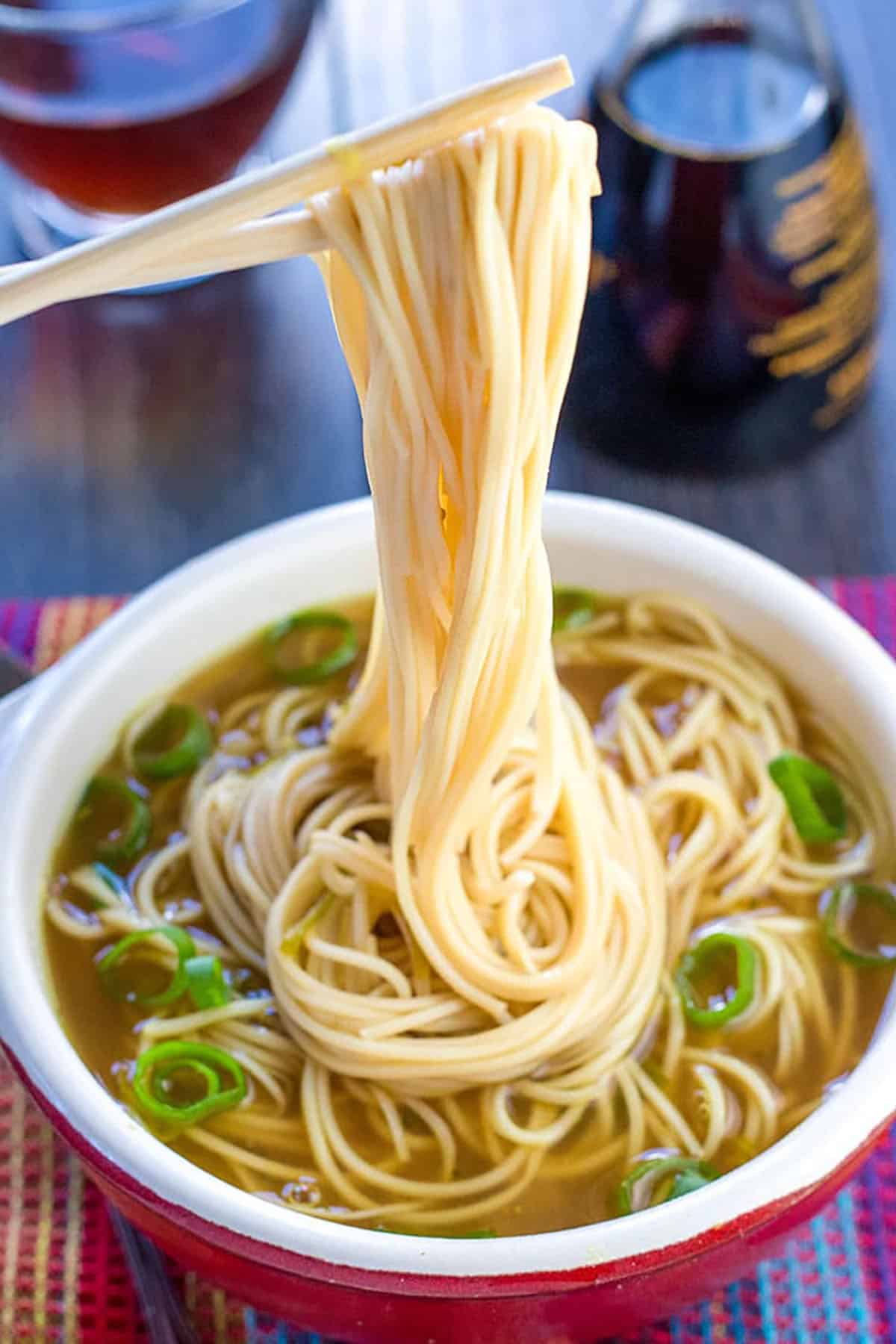
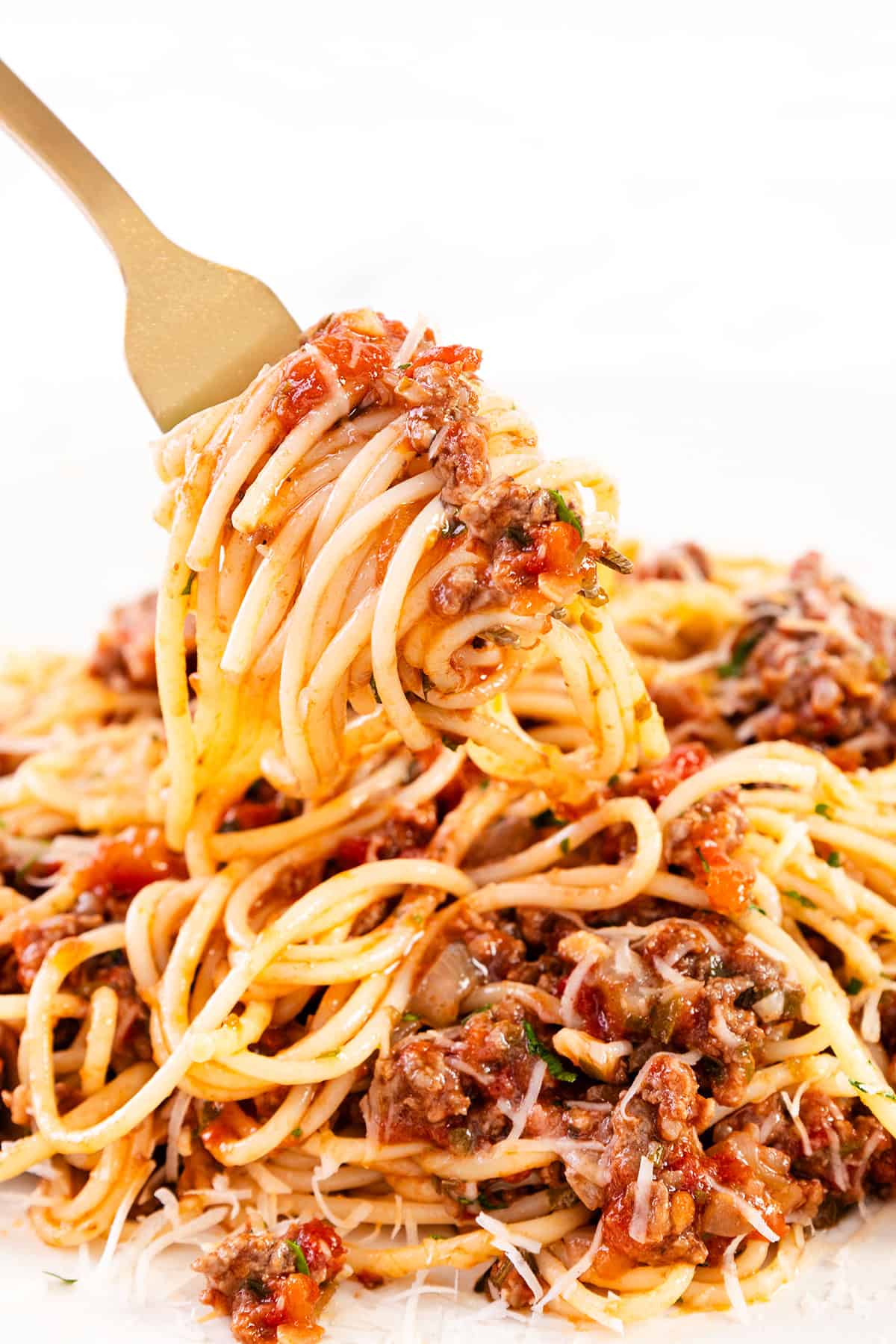
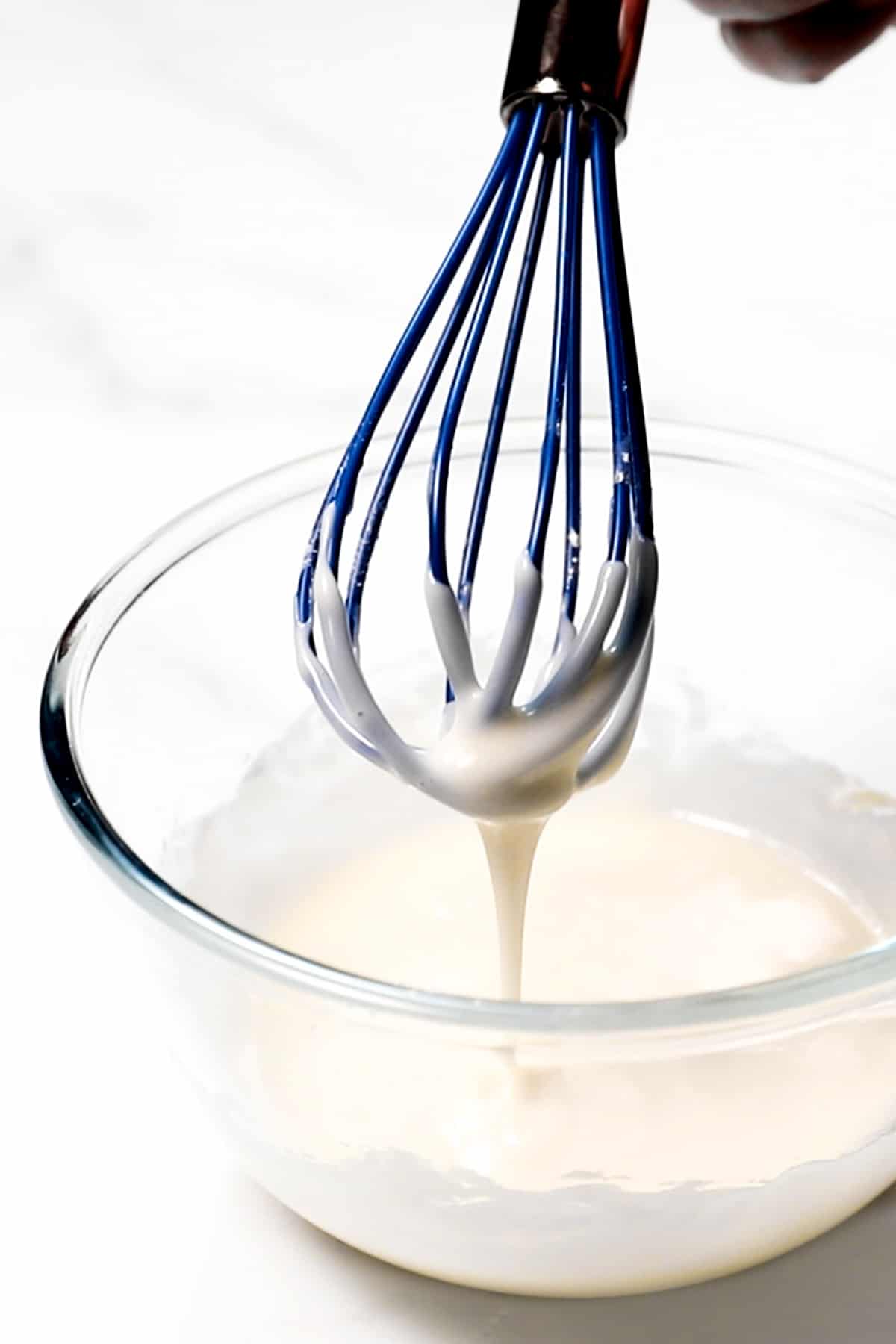
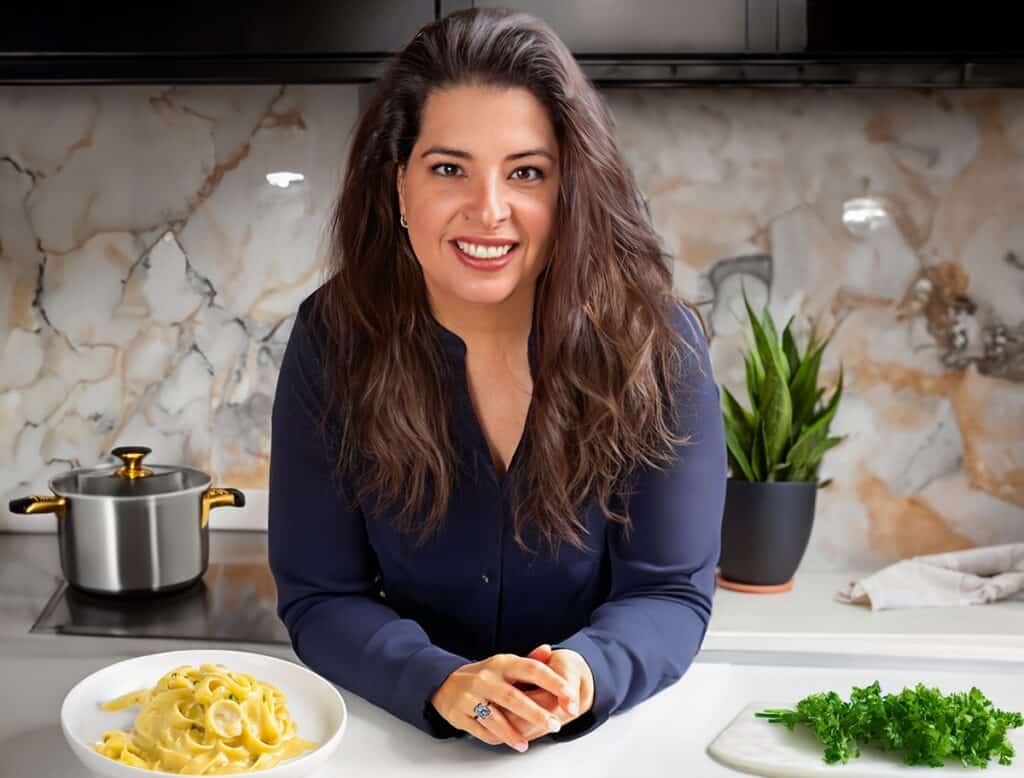
Leave a Reply